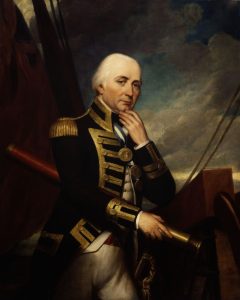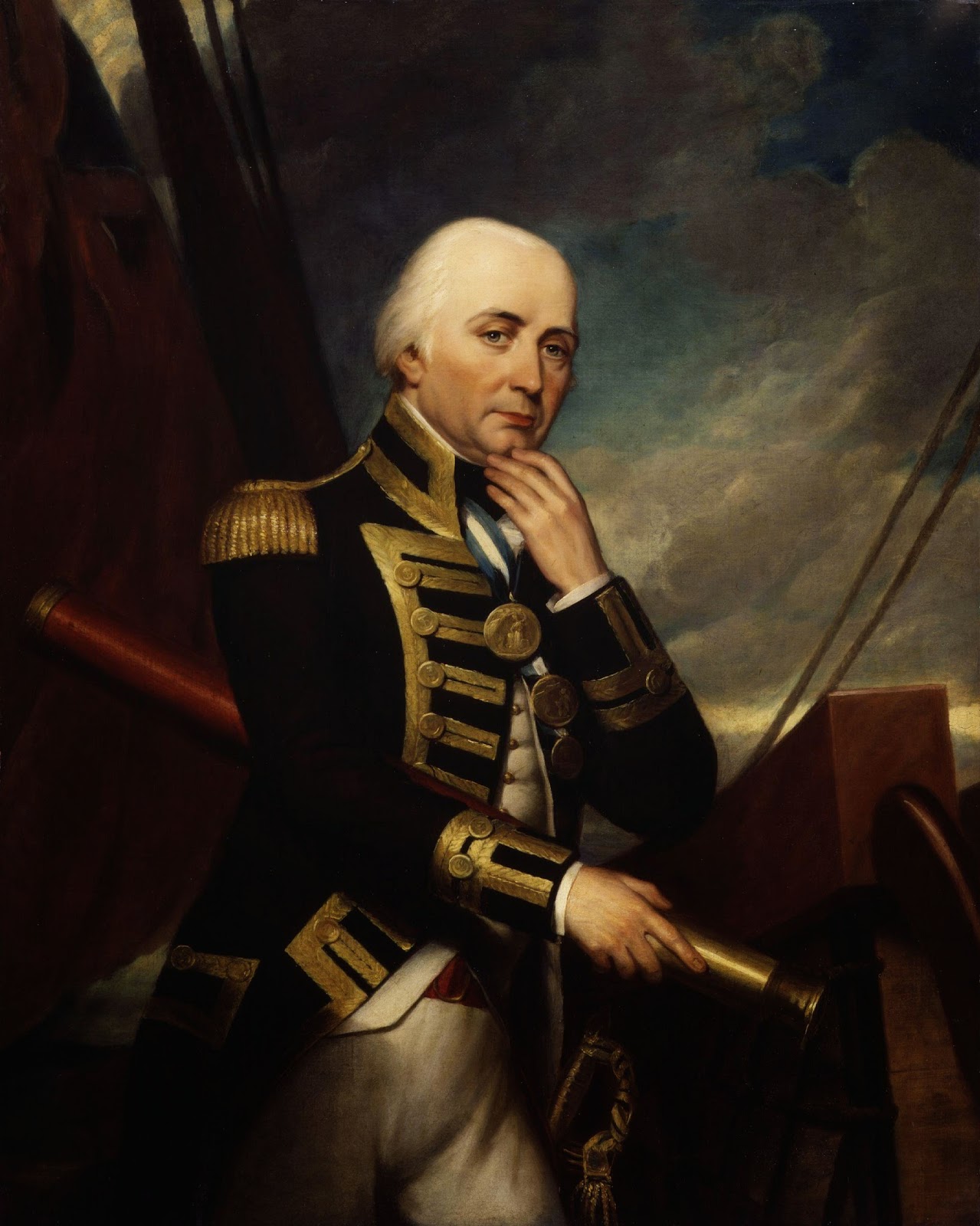For Constitution aficionados, October 21 is a day held in high regard. On this date in 1797, the ship finally, successfully entered her “destined element” and started a career that is still going strong after 217 years.
But students of naval history might be forgiven if they lost track of that fact in the face of a yet more momentous event that happened on this day in 1805: The Battle of Trafalgar. Perhaps the most famous of all naval engagements, the battle caused the almost complete destruction of a combined Spanish and French fleet at the hands of the Royal Navy. The British ships sailed into battle that day under the command of Admiral Lord Horatio Nelson. As any English school child can tell you, Nelson died at the hands of a French sharpshooter in the midst of the battle, but not before learning of his victory. As he breathed his last on HMS Victory’s orlop deck, overall command of the fleet devolved to Vice-Admiral Cuthbert Collingwood.

The museum’s collection includes a letter donated by the late historian Ira Dye that sheds some light on Collingwood’s feelings the day after the momentous victory:
General Order
The Almighty God, whose Arm alone is strength, having of his great mercy been pleased to crown the exertion of His Majesty’s Fleet with success, in giving them a Comple [sic] Victory over their Enemy’s [sic] on the 21st Inst. – that all praise, and thanksgiving may be offered up to the throne of Grace, for the Great benefits to our Country, and to Mankind.
I have thought proper that a day should be appointed of general humiliation before God, and thanksgiving for his merciful goodness, imploring forgiveness of Sins, a Continuation of his Divine Mercy, and his constant aid to us in the Defence of our Country’s Liberties and Laws, without which the utmost Efforts of Man are nought, and direct that Thursday the 7th of Novr. next, be appointed for that holy purposeGiven on board the Euryalus
Off Cape Trafalgar 22d Oct 1805
(signed) Cuth. Collingwood
Incidentally, some have given Constitution the honor of precipitating the Battle of Trafalgar. According to the memoirs of Seaman James Durand, who served on Constitution at the time, the ship entered Cadiz in the middle of October 1805, with the British fleet in close pursuit (they probably thought Constitution was one of the heavy French frigates). While in Cadiz, where the combined French and Spanish fleet lay, Constitution’s officers visited many of the French vessels, and probably learned something of the fleet’s plans for the coming days. Constitution left Cadiz on 19 October, and was quickly intercepted by the British fleet. A British captain came on board Constitution and, according to Durand, “after holding some conversation with Commander Rodgers, sailed directly back to the British Admiral” (p. 30). The Combined Fleet left Cadiz on the 20th and on the 21st, the battle of Cape Trafalgar commenced, which ended in the total defeat of the allied forces, thus putting an end to Napoleon’s hopes for an invasion of Britain- all thanks to a little timely intelligence from Constitution.
This is a good story. Unfortunately, it is not true. Judging from Captain John Rodgers’ correspondence (reprinted in Naval Documents of the Barbary Wars, see p. 292 ff.) during the 18th to the 22nd of October, Constitution lay at anchor in Leghorn Roads, very far from Cadiz!
The Author(s)
Matthew Brenckle
Research Historian, USS Constitution Museum
Matthew Brenckle was the Research Historian at the USS Constitution Museum from 2006 to 2016.
